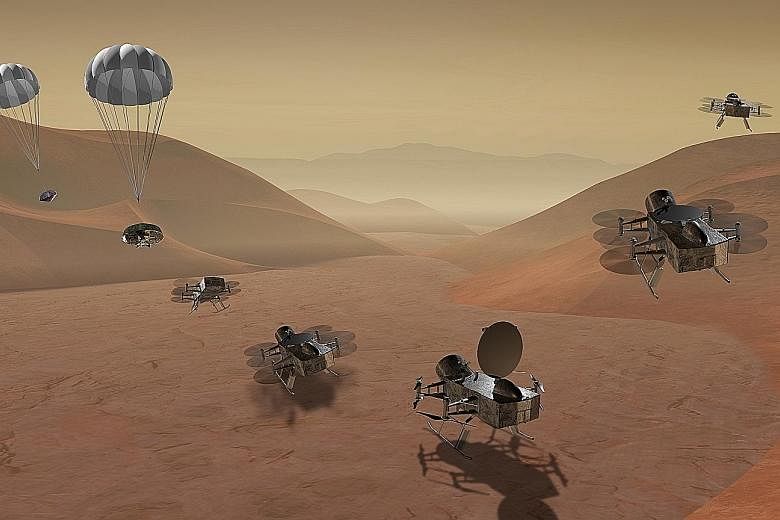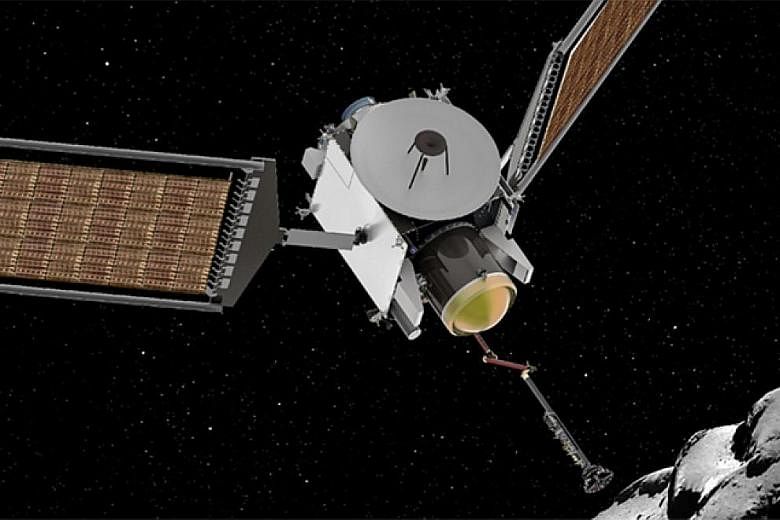WASHINGTON • Nasa has announced two finalists for billion-dollar robotic missions - one to explore a comet and another Saturn's moon Titan - with a launch by the winner planned in the 2020s.
"These are tantalising investigations that seek to answer some of the biggest questions in our solar system today," said Mr Thomas Zurbuchen, associate administrator for Nasa's Science Mission Directorate, on Wednesday.
Titan is Saturn's largest moon and is seen as one of the most likely hosts of some form of life in the solar system because of its rivers and lakes filled with methane.
The mission, called Dragonfly, would involve sending a "drone-like rotorcraft that would explore the prebiotic chemistry and habitability of dozens of sites", Nasa said in a statement.
The other project would return to 67P/Churyumov-Gerasimenko, a comet that has already been visited and mapped by the European Rosetta spacecraft. The mission, called Comet Astrobiology Exploration Sample Return (Caesar), aims to return to Earth with a sample from the comet to determine its origin and history.
"The Caesar and Dragonfly missions will receive funding through the end of 2018 to further develop and mature their concepts," the US space agency said.
"Nasa plans to select one of these investigations in the spring of 2019 to continue on to subsequent mission phases."
Nasa chose the pair from a pool of 12 proposed missions, submitted in April.
The competition is part of Nasa's New Frontiers programme, which has also sent the Juno spacecraft into orbit around Jupiter, the New Horizons spacecraft, which surveyed Pluto, and Osiris-Rex, which was launched last year to collect samples from an asteroid.
Each mission selected has a development cost cap of about US$850 million (S$1.1 billion), with another US$150 million planned for the launch.
AGENCE FRANCE-PRESSE


